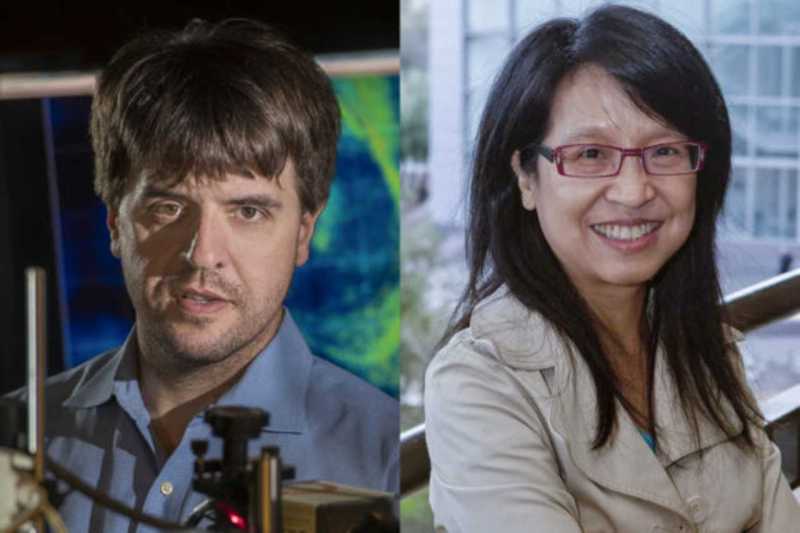Two Stanford professors are among the 86 new members elected to the National Academy of Engineering (NAE) this year.
Bioengineering, psychiatry and behavioral sciences professor Karl Deisseroth and computer science professor Monica Lam were honored “not just for science or engineering work, but also their managing skills,” NAE spokesperson Randy Atkins told The Daily.
“They are leaders in their fields,” Atkins wrote.
Deisseroth and understanding the brain’s wiring
Deisseroth is one of 22 members to be elected to all three national academies of engineering, medicine and sciences. His research focuses primarily on developing molecular and optical tools for discovery and control of neuronal signals affecting behavior in health and disease. Conducting independent research at Stanford in 2004, he investigated ways to make cells respond to light.
“This would give us great specificity— no one could turn on or off specific cells,” Deisseroth explained.
Since then, he has worked with colleagues specializing in molecular engineering and fiber optics principles, which Deisseroth described as “powerful” techniques that propelled his research forward.
He teaches a bioengineering class on optogenetics, a technique developed by Deisseroth himself that uses light to control the brain’s activity and better understand its behavior. The class provides hands-on training to students as they complete final projects based on their research proposals. He also hosts free workshops at Stanford where students can physically conduct experiments and learn about optogenetics.
Deisseroth noted that one of the largest challenges in the field of medicine and neuroscience was the enormous amount of brain-wide data sets that show activity across the brain of vertebrate animals.
“We can get molecular and wiring information about these cells from the data,” he explained. “These are enormous, exciting data sets we’ve wanted for a long time. We don’t know how to analyze them — we can’t even store it.”
Deisseroth is also a part of Stanford Bio-X, where he appreciates its interdisciplinary biosciences environment.
“Many biologists care most deeply about an organism and its behaviors, gene or cell,” he said. “Engineers come to the table to get to the fundamental properties of the system … I have teams of people where skills are complementary.”
Lam and improving the virtual assistant
Monica Lam, a computer science professor with a courtesy appointment in electrical engineering, was honored by the Academy for her research on advanced compiler and analysis systems for high-performance computers. She currently leads the Open Virtual Assistant project and works with a project team that includes other professors at Stanford from the fields of natural language processing, human-computer interaction, distributed systems, music, and medicine.
One of the problems she and her team address is that certain applications inputted into virtual assistants like Google Assistant or Amazon Alexa are only available to those virtual assistants. Lam hopes to create a repository that everybody can contribute to and use to build their company’s virtual assistant.
Her team also works to navigate the complex technology that allows virtual assistants to understand natural language data. Their ultimate goal is that the individual should control which data they choose to share.
“We want to get as many people as possible to contribute to open-source technologies so that the interfaces are available to any company to build their products,” she said.
The selection process
Every year, a class size of about 100 members are selected for the Academy from a pool of approximately 550 nominations. This year, Deisseroth and Lam were two of 86 U.S. members and 18 foreign members elected.
Each of the twelve sections that represent broad engineering categories at the National Academy of Engineering has search committees that “work throughout the year to identify potential nominees who were deserving of election.”
Other members of the NAE are involved in supporting those nominations. This four-month long process lasts from February through May, followed by a period of time from July to December when the general membership provides comments on all of the nominations before the committee evaluations. Section peer committees rank the recommended members, and during the month of January, the committee on membership does a “final evaluation for who gets placed on the final ballot.”
Atkins noted that the members must promote public understanding of the subtle difference between science and engineering principles.
“It may seem trivial, but if we’re going to get the best and the brightest students solving global challenges, they should know what engineering is and what it means to be an engineer,” Atkins said. “Certainly our new members can play a role in helping the public understand that.”
This report has been edited to clarify the makeup of Lam’s Open Virtual Assistant project team. The Daily regrets this error.
Contact Yusra Arub at yusraarub19 ‘at’ mittymonarch.com
